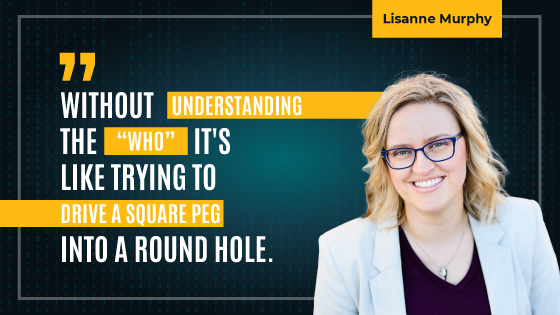If you want to get into the mind of your dream customers to create easy sales without hitting objections, then read on. By the end, you’ll understand the complete process that I take each of my clients through to define their dream customer to help them be successful.
We’re diving deep into the dream traffic definition framework. Get ready to have some major epiphanies as you go through these exercises; this approach will create major changes in your messaging!
Why Do Different Entrepreneurs Get Different Results? They Don’t Define Their Dream Customer
When I help my clients with Facebook Ad campaigns, it’s so interesting to dig into the data to figure out exactly why similar campaigns get such different results for different entrepreneurs.
Here’s one difference: successful campaigns look at the entire system and funnel. You can’t just isolate ads and then isolate the funnel. It’s all about the whole system from the second someone sees an ad all the way until they purchase. This is one living and breathing system that you have to organize and make sure that everything in the system is in congruence.
Those that understand who their audience is on a deep, psychological and behavioral level are way more successful. If you have a clear image of who your ideal client is, you’ll be able to present a clear offer. No longer will you be trying to drive a square peg into a round hole!
These 6 steps outlined below make up the first of 3 steps in my 3D process (define, discover, and drive). This stage will help you define your dream customer so they become your dream traffic.
The 6-Step Framework To Define Your Dream Customer
Just like in the movies, there’s the good cop/bad cop method: the bad cop entices the person they’re interrogating to cough up all of the information they need. This “B. A. D. C. O. P.” framework helps you get your dream traffic.
1- Behavioral Graphics to Define Your Dream Customer
This is all about their consumer behavior. Figure out what problems they’re trying to solve and the results they’re trying to achieve. This also takes into account their level of awareness of their problem, which will determine how easy or difficult it is to sell to them.
2- Archetype Graphics
You aren’t selling to ONE customer, but you’re selling to a few major buckets of people. Being able to define the different groups will help specify messaging. There are a few factors that are the differentiators: age, experience, awareness level, and level of DIY. Define your dream customer for each.
3. Demographics to Define Your Dream Customer
Get really specific here; demographics is way more than just saying “female entrepreneurs between the ages of 25 and 40.” Smart demographics also take into account preferences on surveys, as well as physical characteristics like age, gender, marital status, political affiliation, religion, geography, profession, education, and income level. Take the time to flesh out your demographics so you define your dream customer and they feel 3-dimensional to you.
4. Competitor Graphics
There are four things to consider:
- What are your direct competitors doing already?
- Do the gurus of your industry say anything about your or similar products?
- What are complementary products that boost the effectiveness of your product?
- Which messaging angles work for your competitors?
Analyzing each of these will help you understand what’s already going on in your industry so you can go out and stake your claim.
5. Offer Graphics
How is are prospects oriented towards your particular product or service? Consider two things: the benefit and the beliefs. With benefits, you analyze the unique selling proposition of your offer and think about what your customers can expect to occur or change by using your product or service. With beliefs, we look into the internal and external limiting beliefs that may prevent someone from purchasing your product. When you define your dream customer, you must also be sure the offer is right.
6. Psychographics to Define Your Dream Customer
Psychographics is the spirit that brings everything to life. Look at personality and their values, attitudes, behaviors, interests, hobbies, and their lifestyle in general. Consider their pain points (what brings them to your product or service), their fears (what keeps them from figuring out their problem on their own), and their status orientation (whether they’re trying to compete to be better than everyone else, or if they want to be part of a group in a complimentary approach).
Take yourself through this exercise and you will define your dream customer so that you can create your own dream traffic!

